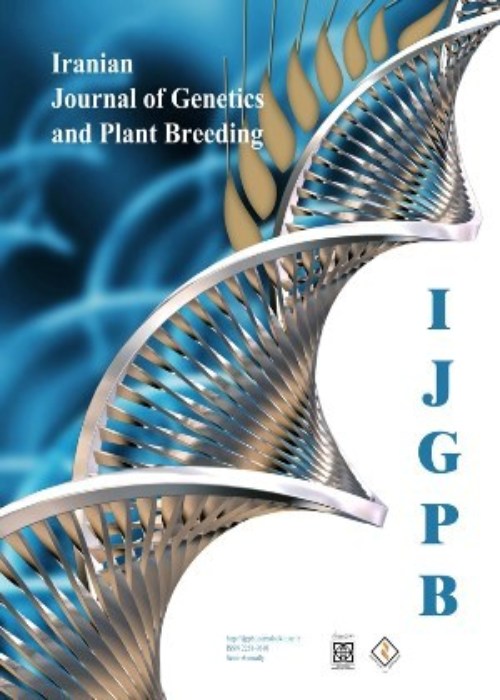Effect of Ascochyta blight disease on antioxidant enzymes activities, amount of proline and carbohydrate in some chickpea genotypes
Germplasm evaluation of crop plants as a repository of useful genes to cope with biological and abiotic stresses has always been the focus of plant breeders. The fungus causing Ascochyta blight is one of the most important biological factors limiting chickpea cultivation and production in most parts of the world, including Iran.The present study was conducted to identify the genetic sources of resistance of 20 chickpea genotypes in seedling, flowering, and podding stages in greenhouse conditions. Damages caused by the disease was recorded using a 9-degree scale after observing complete death in the sensitive control genotypes. Analysis of variance of the studied traits of chickpea genotypes was conducted via factorial experiment in a completely randomized design at two levels for factor A (disease-free and disease-contaminated conditions) and 18 levels (genotypes) for factor B (genotypes 13 and 15 were lost due to high susceptibility to the disease in the first stage of growth, samples were taken from 18 genotypes).The results showed that the resistant and susceptible genotypes were more accurately distinguished from each other in the podding stage. At this stage, 9 genotypes with a degree of damage 1, 2, and 3 (less than five) showed high resistance to the causative agent of Ascochyta blight. Physiological and biochemical traits involved in disease resistance were measured. The results showed that all traits except chlorophyll a, chlorophyll b and polyphenol oxidase had significant differences at 1% probability level in terms of disease stress. Chlorophyll a, chlorophyll b contents and polyphenol oxidase activity were significantly different at 5% probability level. In interaction of disease×genotype, only catalase was significantly different among all studied traits. The amount of peroxidase and polyphenol oxidase were affected by the disease and their rates increased. A positive relationship was observed between the level of polyphenol oxidase enzyme and pathogen resistance. Generally speaking, crops’ reactions to harsh environmental conditions seems impossible to predict without the analysis of the relevant mechanisms.
- حق عضویت دریافتی صرف حمایت از نشریات عضو و نگهداری، تکمیل و توسعه مگیران میشود.
- پرداخت حق اشتراک و دانلود مقالات اجازه بازنشر آن در سایر رسانههای چاپی و دیجیتال را به کاربر نمیدهد.






